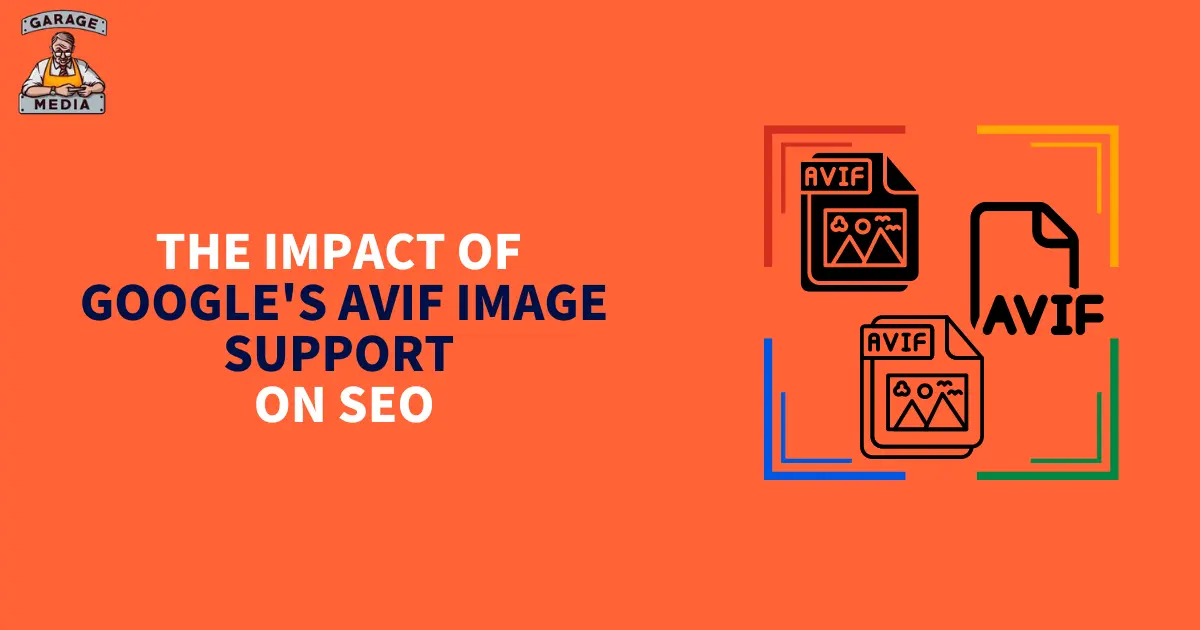
The Impact of Google’s AVIF Image Support on SEO: What You Need to Know?
With Google’s recent endorsement of AVIF (AV1 Image File Format), the SEO landscape is poised for significant changes. This new image format could be a game-changer, offering enhancements in page speed, image quality, and overall user experience. Understanding the implications of AVIF for SEO is crucial for webmasters and digital marketers aiming to stay ahead in the competitive online environment.
Why Image SEO Matters: The Key to Online Success
Before diving into the specifics of AVIF, it’s important to understand why image SEO is a critical component of your digital strategy.
- Page Load Speed: Images often constitute a large portion of a webpage’s total weight. Optimizing images for faster loading can dramatically improve page speed, which is a significant ranking factor for search engines.
- User Experience: High-quality, well-optimized images enhance user experience, reducing bounce rates and increasing engagement. This, in turn, positively impacts SEO rankings.
- Search Engine Visibility: Properly optimized images contribute to better search engine visibility. Alt text, captions, and image descriptions help search engines understand the content and relevance of your images.
- Mobile Optimization: With the rise of mobile browsing, ensuring that images load quickly and display correctly on mobile devices is essential. This aligns with Google’s mobile-first indexing approach.
What is AVIF? A Deep Dive into the New Image Format
AVIF stands out in the realm of image formats due to its advanced compression capabilities and visual quality enhancements.
- Compression Efficiency: AVIF images use the AV1 codec to achieve superior compression rates. This means smaller file sizes without sacrificing image quality, which translates to faster load times and reduced bandwidth usage.
- Visual Quality: Despite its efficient compression, AVIF maintains high image quality, offering improved color depth, dynamic range, and overall visual fidelity.
- Additional Features: AVIF supports features such as transparency (like PNG) and animation (similar to GIF), making it a versatile option for various use cases.
How AVIF Can Transform Your SEO Strategy
Integrating AVIF images into your SEO strategy can yield several benefits:
- Enhanced Page Load Speeds: Faster page load times are crucial for user satisfaction and SEO. Smaller AVIF files contribute to quicker load speeds, which can improve your search rankings and user experience.
- Improved User Engagement: High-quality, fast-loading images enhance the overall user experience. Engaged users are more likely to stay longer on your site, reducing bounce rates and increasing the likelihood of conversions.
- Better Mobile Performance: AVIF’s efficient compression is particularly beneficial for mobile users, ensuring that your site performs well across various devices and network conditions.
- Competitive Edge: Early adoption of AVIF can give you a competitive advantage by optimizing your site ahead of competitors who may be slower to embrace this technology.
Implementing AVIF Images: Best Practices
To make the most of AVIF images, consider the following implementation strategies:
Gradual Integration with Fallbacks: Since not all browsers support AVIF yet, use the <picture> element to provide fallback options for unsupported browsers. For example:
html
Copy code
<picture>
<source srcset=”image.avif” type=”image/avif”>
<source srcset=”image.webp” type=”image/webp”>
<img src=”image.jpg” alt=”A description of the image”>
</picture>
- Optimize Before Conversion: Ensure that your images are optimized before converting them to AVIF. Tools like ImageMagick or Squoosh can help you adjust compression settings to balance quality and file size.
- Monitor Performance: Track key performance indicators (KPIs) such as page load speed and Core Web Vitals after implementing AVIF images. Utilize tools like Google PageSpeed Insights and Lighthouse to measure the impact of AVIF on your website’s performance.
- Stay Updated: Keep an eye on developments in browser support for AVIF and be prepared to update your image formats as support expands.
The Future of Image Optimization: Embracing AVIF
As Google and other major players in the tech industry continue to push for improved web performance, AVIF represents a significant advancement in image optimization. By adopting AVIF images, monitoring their impact, and staying current with evolving standards, you can ensure your website remains competitive and performs at its best.
In conclusion, leveraging AVIF as part of your SEO strategy offers the potential for enhanced page load speeds, improved user experience, and better search rankings. As the support for AVIF grows, integrating this format early on can provide a valuable edge in the ever-evolving digital landscape.
